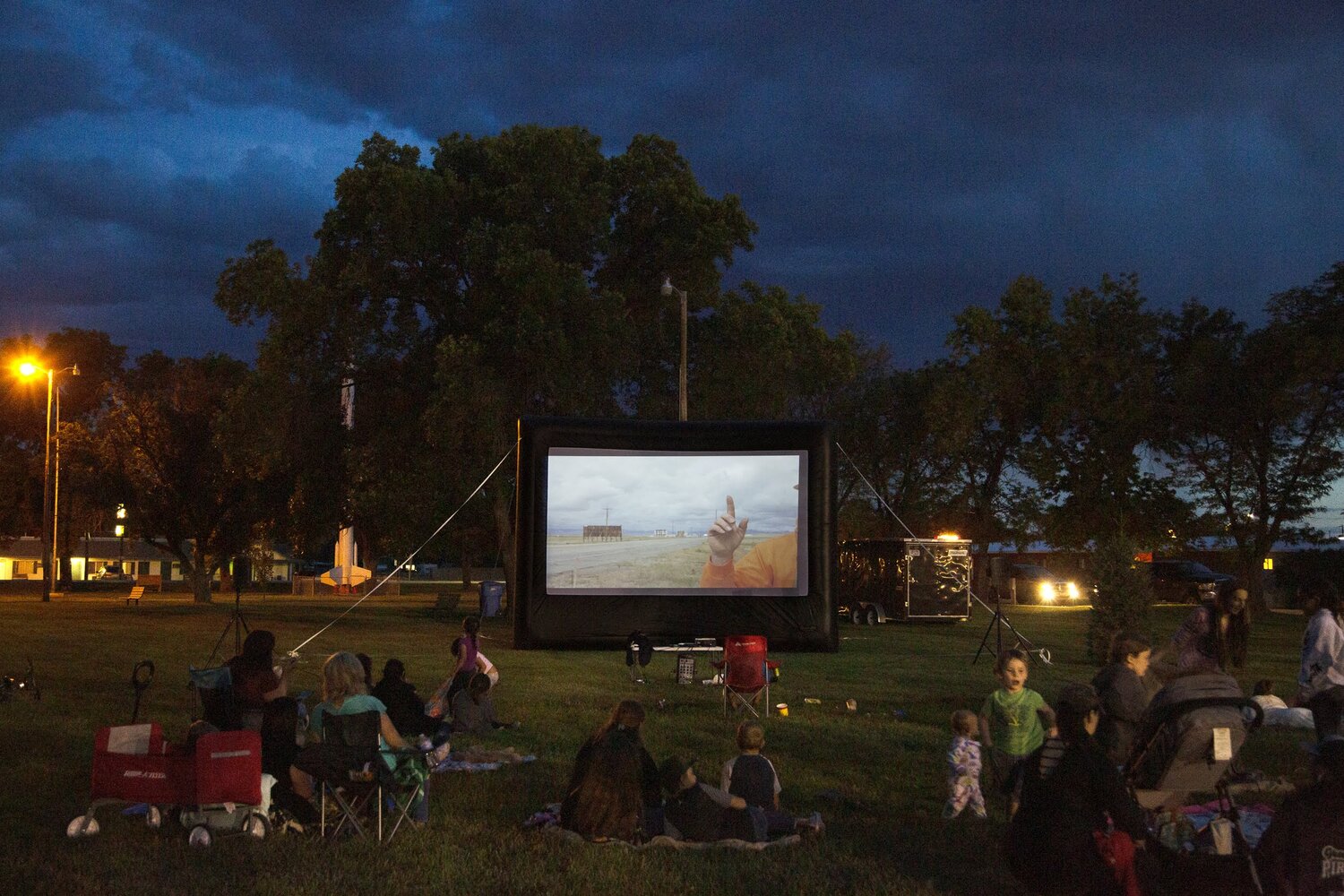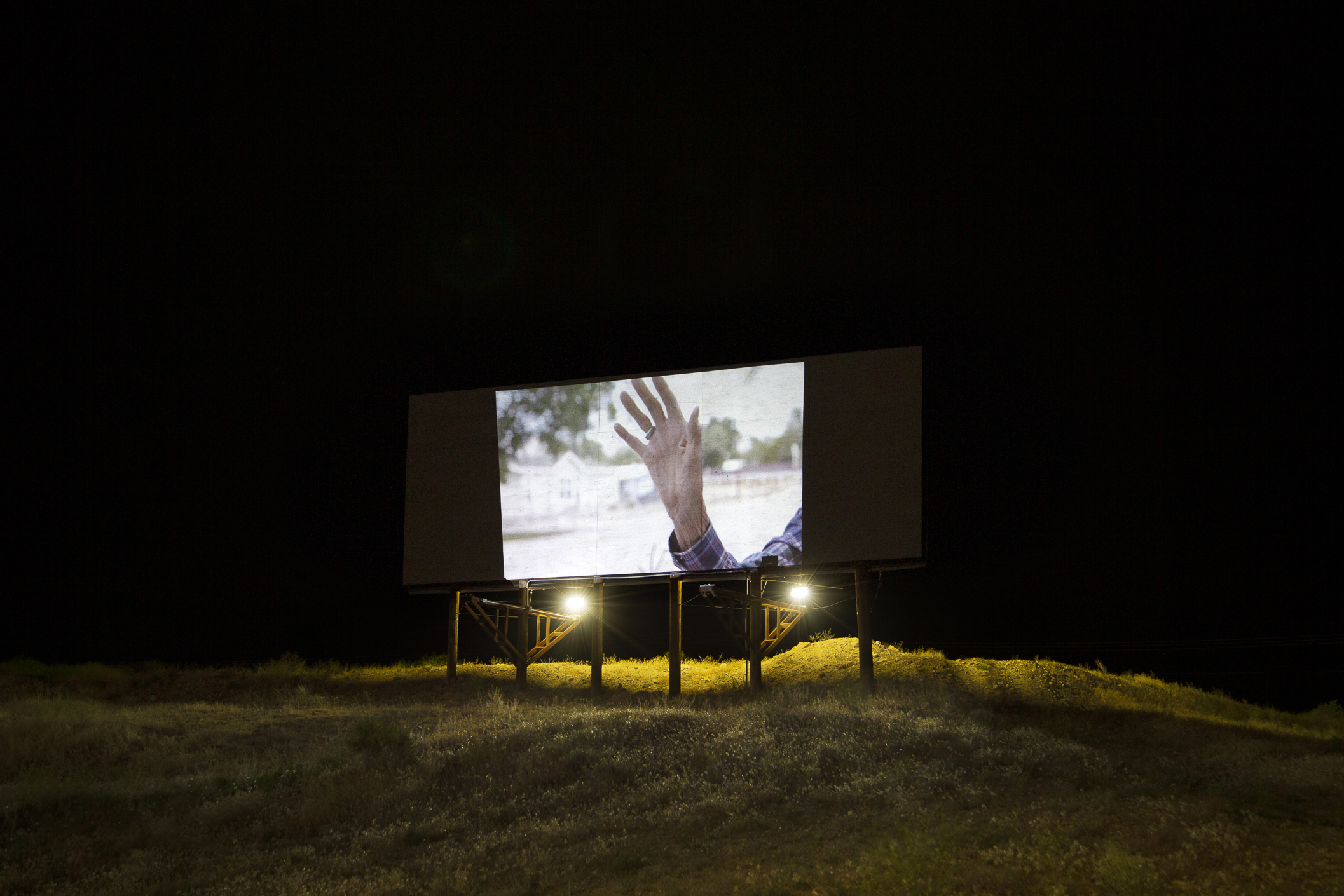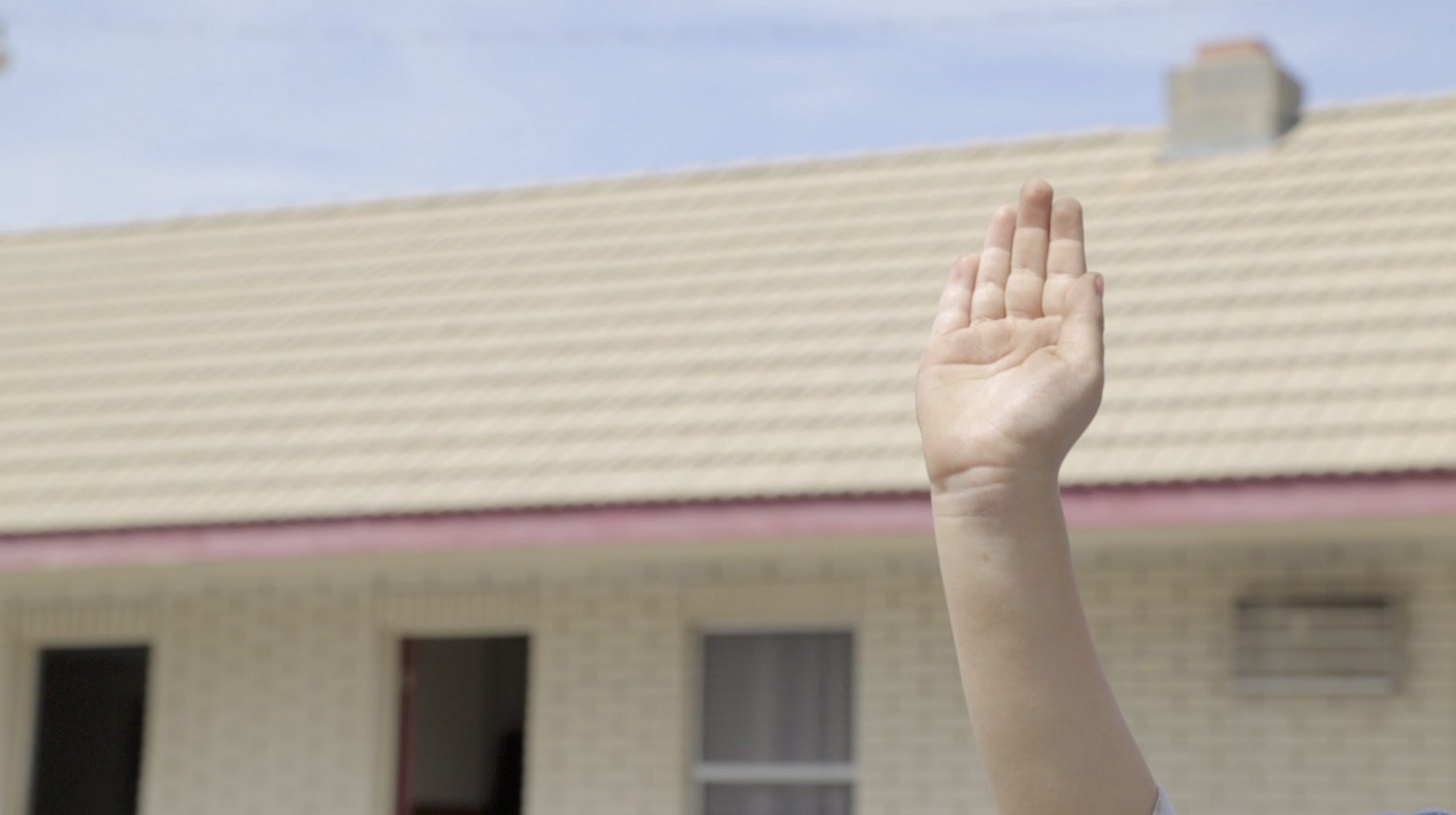With Five (or Fewer) You Greet Friends
This essay was written for Epicenter's Why This Place?: A Future-Forward Retrospective catalog published in 2021.
In the spring of 1928, the artist John Heartfield stood outside a Berlin factory, asking to examine the hands of exiting workers. When he saw a quintessentially calloused and rough hand, he took the laborer to a nearby site to photograph the hand before returning to the factory to resume his search. Heartfield was part of the agitprop division of the KPD (Kommunistische Partei Deutschlands)—an anti-fascist party—where he had recently accepted an assignment to promote the party’s ballot placement in the fifth slot.1 He had a vision for using a proletariat hand reaching for the camera to seize political victory—the five extended fingers creating a visual reminder to voters of which box to check.
After sorting through hundreds of photos, Heartfield and his colleagues selected a hand featuring thick, boxy fingers with deep, weathered crags.2 The dark lighting appeared as a layer of factory soot and grime, lending a further air of gritty authenticity to the image. This was the hand of the people. It was isolated on a white background and emblazoned, larger than life, on posters pasted around Berlin with the accompanying tagline: “5 Finger hat die Hand. Mit 5 packst Du den Feind.” (5 Fingers Has the Hand. With 5 You Seize the Enemy.).
Nearly ninety years later, and 8,000 miles away, the artist Calista Lyon began collecting short video clips of the residents of Green River, Utah, waving hello/goodbye for the camera. Only their hands and arms are visible in the camera frame, with mildly blurry backdrops of the rural town as a secondary character. The resulting silent seven-minute video, Localized Gestures, is a cheery catalog of greetings.

Localized Gesture, 2019
Video projected on a billboard
Bright, hazy, desert light cascades across each scene featuring grocery stores, homes, the Green River, Main Street, and other locales. There is not an archetypal Green River hand or wave. Lyon created the video “as a way to see this community together, to hold the nuance of each person through their own gesture.”3 The aggregated 173 vignettes (featuring 175 gestures), become a composite portrait of Green River and its variances. A pudgy toddler, withered senior, sno-cone shack worker, tattooed twenty-something, and hands with missing digits wave frantically back and forth, throw out three-fingered hails, rapidly open and close their mitts, and twiddle their fingers as part of the salutation parade. A single middle finger is jokingly jabbed in the air by an aged citizen as a humorous counterpoint.
Lyon grew up in a family of farmers in Tallangatta Valley, Australia. She recognized the similarities between her rural upbringing and the bucolic Green River. She wrote of her time in Epicenter’s Frontier Fellowship:
One thing I always love when I visit rural communities is that everyone greets one another. [. . .] Almost everyone knows everyone, a lot of people wave to one-another from their vehicles, as a kid I used to love to watch the different gestures of people’s waves from above the steering wheel. To this day, I love going to smaller communities where this is common practice.4
The symbolic gesture of a wave is a call-and-response that seeks reciprocation and connection. It is an acknowledgement of seeing and having been seen. By its nature, like a tango, waving takes two.
Lyon’s cavalcade of kindness rolled out in 2019 in the heart of Trump’s America. Amid national calls to return to civility, Lyon’s video is an example of the ingrained courtesy endemic to rural areas and the sense of communal familiarity. Small towns remove the sense of anonymity found in larger cities. Schools, churches, community organizations, and events create an environment for the mixing of classes and groups that might otherwise remain more homogeneous and bring them together in waves, handshakes, backslaps, and hugs.
Green River’s added layer is an economy tied to travel and tourism. Not only is the city friendly to insiders, but outsiders are welcomed into the community and its etiquette as well. Epicenter itself even plays that role—introducing artists from the outside to various social strata within the city.

Localized Gesture, 2019
Video projected on a billboard
Lyon’s finished work was projected after dark at a community picnic, on the sides of parked semi trailers that pulled off of Interstate 70, the exterior of a popular local restaurant, and a billboard visible to cars as they drove out of town. This project was made in part by the locals, primarily for the locals, with local symbolic gestures connecting and responding to one another as its subject. Placing the work into the public sphere reflects back to the locals a story of a generosity of spirit; and to those passing through, an invitation to engage with the community on friendly terms.
Although Heartfield and Lyon share a methodology of searching for and collecting images of hands, Heartfield’s hand of the oppressed aggressively reached for and discursively defined a political enemy, whereas Lyon’s hands welcome unity and solidarity. Heartfield sought an emblematic worker’s hand to highlight class division and power struggles, and Lyon’s collective video is not building an “us vs. them” narrative but just an “us.” Heartfield was engaged in agitprop, Lyon in what I call “civicprop.”
Civicprop mediates the bringing together of people, not in opposition to others, but in celebration of geographic proximity and situational commonalities. Lyon’s work in Green River, as well as other areas, falls into this category that is part social anthropology and part representational narrative that reflects back histories, characteristics, and stories to help archive and solidify collective civic identity.

Localized Gesture, 2019
Video still
Lyon’s Localized Gestures is a document of Green River in 2019, pointing to larger political climates, symbolic gestures, and the similarities and quirks of rural cultures. It is also a centerpiece of public pride and a clarion call to visit or stay. As a disseminated video, it is a postcard sharing the greetings of Green River with anyone who sees the video, anywhere in the world. With five or fewer fingers, it waves to you and hopes you wave back.
- Sherwin Simmons, “‘Hand to the Friend, Fist to the Foe’: The Struggle of Signs in the Weimar Republic,” Journal of Design History 13, No. 4 (2000): 329–330. [Back]
- Simmons, “‘Hand to the Friend,’” 329–330. [Back]
- Calista Lyon, email message to author, January 16, 2021. [Back]
- Lyon, email message to author. [Back]